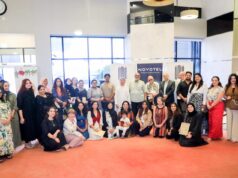Technology in the 21st century has enabled us as humans to make strides our ancestors could only dream of. And yet, nagging doubts remain that technology is taking over our lives. One question remains: Is a hi-tech society delivering all it promised?
Technology is hugely important to our lives
Love it or loathe it, technology affects almost everything we do today and it also influences most of our plans for the future. Whether we experience the benefits of a hearing aid or a hearing implant, use a mobile phone, listen to music and radio, surf the internet for news or turn the GPS on in our car, we are constantly enjoying the benefits of a hi-tech life. Technology making our lives healthier, more convenient and more entertaining in 2018 In the last two years, technological innovations have meant major strides in three areas in particular:
Technology in health sector
Medical practitioners are diagnosing illness quicker and more efficiently through the use of artificial intelligence and performing surgery effectively with the help of flexible robots – their hands essentially mimicking the human hand, but with the advantage of greater rotation and flexibility. Devices which help to improve our health are improving all the time, for example MED-EL audio processors (the externally worn part of a hearing implant) have come a long way from the first model 40 years ago and now boast wireless charging, wireless phone and TV connection and a sleek design which makes them virtually undetectable under the hair.
High-tech leads to convenience
Mobile phones have morphed from convenient instruments of communication to personal computers where we can now instantly access data and services via the touch of a button. We can order shopping, rent cars, plan our journeys to work and book doctors’ appointments, all from our handheld smartphones. Machines are being taught to mimic humans in their ability to perform repeat tasks, for example driving a car. In the future driverless cars will make it possible for us to prepare for a 2-hour business meeting in the back of a “robo taxi”.
Entertainment
Machine learning and virtual reality now dominate the entertainment space. On-demand television means that we no longer have to wait to watch our favourite TV shows, or indeed make decisions on what to watch: machine-learning makes recommendations based on our viewing habits. Everything personalised, everything individualised. Virtual reality immerses viewers into live roleplay, and mixed reality has enabled games like Pokemon Go to flourish.
Addicted to instant gratification
Whether it be clicking on an on-demand TV show, or demanding Alexa change the song, technology is designed to meet our needs instantly. We simply do not have to wait for anything anymore. Certainly, the convenience of modern technology means we can achieve more. But is constantly getting what we want, when we want it, a good thing?
A famous study conducted at Stanford University in the 1960s would suggest not. In the study, children were placed in a room with one marshmallow on a plate. The lead researcher gave the children an easy instruction: You can eat the marshmallow now, or wait 15 minutes and receive two marshmallows. The researchers found that the children who were able to wait for the second marshmallow without eating the first one scored higher on standardized tests, had better health, and were less likely to have behavior problems.
Constantly available, constantly online
Whether it be clicking on an on-demand TV show, or demanding Alexa change the song, technology is designed to meet our needs instantly. We simply do not have to wait for anything anymore. Certainly, the convenience of modern technology means we can achieve more. But is constantly getting what we want, when we want it, a good thing?
A famous study conducted at Stanford University in the 1960s would suggest not. In the study, children were placed in a room with one marshmallow on a plate. The lead researcher gave the children an easy instruction: You can eat the marshmallow now, or wait 15 minutes and receive two marshmallows. The researchers found that the children who were able to wait for the second marshmallow without eating the first one scored higher on standardized tests, had better health, and were less likely to have behavior problems.
Constantly available, constantly online
Achieving a Tech-Life Balance
Can we enjoy the benefits of technology without succumbing to a tech-controlled life? Can we control it without being controlled by it? Our hints for achieving a tech-life balance.
- Utilise technology that makes your life easier (and don’t feel bad about it!): If a hearing implant is the right decision for you, celebrate the fact that you live in an age when this technology is available. Take advantage of it!
- Limit times when people can contact you: Reduce the unhealthy aspects of multitasking by allocating only certain hours of your day to responding to messages, or turning your phone off at night.
- Limit social media and TV time: studies have shown they are addictive. If you find yourself constantly reaching for the remote or checking your news feed, consider limiting your daily intake. Both social media and TV can be used in ways that support your life, but overuse can diminish it.
- Reconnect with nature and exercise: studies have shown nature and exercise help fight stress and depression. Consider doing 30 minutes of exercise outside each day with a friend, and experience the benefits a short break from technology can offer!







